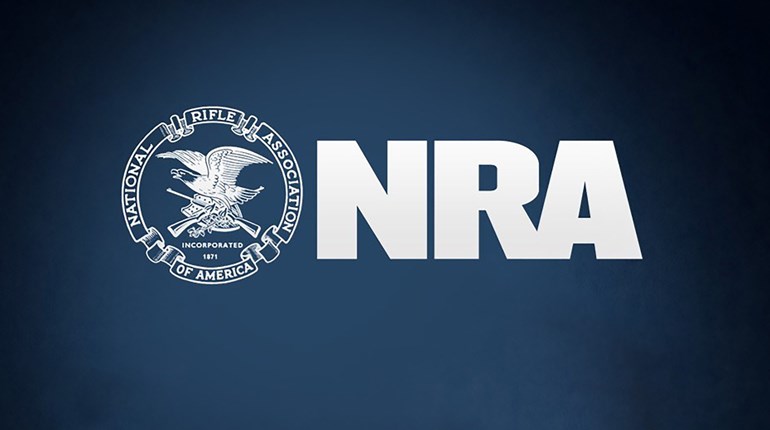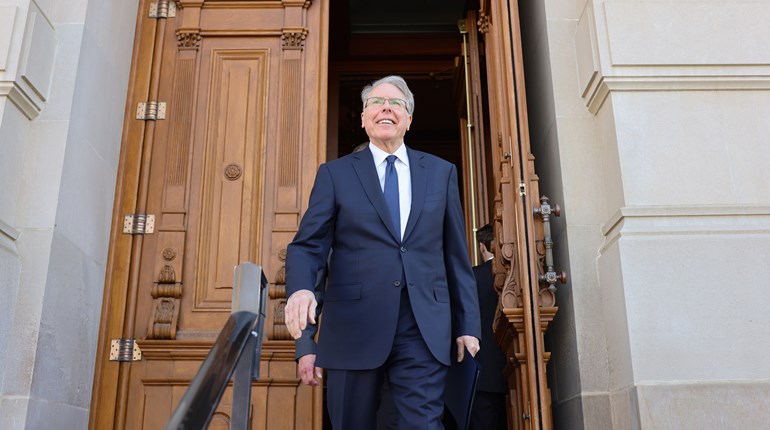
This feature appears in the October ‘17 issue of NRA America’s 1st Freedom, one of the official journals of the National Rifle Association.
Of the many big lies of the gun-ban media, none should make us angrier than the malicious, false notion that somehow the NRA is racist.
Confronted with that “NRA-racism” claim by a CBS news anchor, my instant reply was to say that at a time when the doors of many newsrooms were sealed against employment of people of color, membership in the NRA was wide open.
It has been ever thus since the founding of our Association in 1871 by former Union officers—men who were deeply committed to ending the vestiges of slavery and to seeking equal rights for all.
One of the great honors of my career at the NRA was serving with Charlton Heston and Roy Innis—among the great figures in the Civil Rights movement of the 1960s.
Heston marched in Selma, Ala., and in Washington, D.C., arm-in-arm with Dr. Martin Luther King, who was a gun owner who knew the sting of racist gun control.
Heston was a man not just touched by that history, but immersed in it. He lived and breathed civil liberties. He understood better than anyone the NRA’s role as the oldest civil rights organization in the nation. With our unyielding dedication to preserving the Second Amendment, the NRA has long been fighting the covert racism of "gun control." Even today in some cities, gun banners target Hispanics and African-Americans.
Innis, who headed the Congress of Racial Equality (CORE) as a civil rights pioneer in the 1960s, was a staunch Second Amendment supporter, serving for 25 years as an NRA director until his death in January this year. His son, Niger, carries on in his footsteps.
With our unyielding dedication to preserving the Second Amendment, the NRA has long been fighting the covert racism of “gun control.” Even today in places like Chicago and D.C.—where the Supreme Court’s will on the Second Amendment is ignored—the targets of the gun banners are good and honest inner-city residents who are the victims of unchecked armed violence: Hispanics and African-Americans.
Nowhere was that more apparent than in the story of Otis McDonald, the lead plaintiff in the U.S. Supreme Court case that knocked down Chicago’s draconian gun ban in 2010 and extended the individual right to keep and bear arms to every corner of the nation.
An elderly black veteran disarmed by the Chicago political machine of his right to own a handgun in his home, McDonald lived in a once-peaceful neighborhood that had been taken over by gang members. His singular accomplishment was summed up in an obituary published in the Chicago Tribune in 2014, two days after his death at age 80.
“Mr. McDonald felt strongly that he had a duty to stand up for the rights that had been taken away from African-Americans during slavery. … He had come to understand more about his ancestors and the … ‘black codes’ that kept guns out of the hands of freed blacks.”
The Tribune quoted McDonald as saying, “There was a wrong done a long time ago that dates back to slavery time. … I could feel the spirit of those people running through me as I sat in the Supreme Court.”
McDonald’s recounting of history was on the mark. Just as people of color were denied the right to vote, they were denied the right to keep and bear arms—and with it, the right to protect themselves, their families and their communities.
In her autobiography, former Secretary of State Condoleezza Rice recalls her first understanding of the Second Amendment. It came in the wake of the 1963 bombing of a black church in Birmingham, Ala.—a horrendous crime that took the lives of some of then-8-year-old Rice’s childhood friends. The murders of those children forever changed the Civil Rights movement in America. Rice’s father, a pastor, feared the same fate for his church. She wrote:
“After the first explosion, Daddy just went outside and sat on the porch with his gun on his lap. He sat there all night looking for white night-riders. Eventually, Daddy and the men of the neighborhood formed a watch. They would take shifts at the end of the entrances to our streets.” Had they registered their guns, she said, racist law enforcement “surely would have confiscated them or worse.” In our 146-year history, open doors for minorities, and defense of our common rights, has been at the center of the NRA’s existence.
If you want an example of selective racism in gun control, it came in the first few months of the existence of the NRA Institute for Legislative Action (ILA).
In 1975, the nation’s urban gun owners were faced with the threat of federal gun controls that would apply strictly to urban areas that kicked in when crime rates hit a certain score.
Pushed hard by then-President Gerald Ford’s attorney general, Edward H. Levi, the plan was to disarm selected city and suburban residents of their right to armed self-defense.
Shockingly, Levi was more concerned with lawfully armed citizens than illegally armed criminals. In April 1975, he told a law enforcement conference, “[W]e must try to act immediately to counter a dangerous trend in our cities, in which citizens, skeptical of the government’s ability to protect them, seek to guarantee their personal safety through a terrible balance of force.”
Terrible balance of force? He was talking about armed citizens—good people versus evil criminals, where only the good can be disarmed. And he was talking about populations of majority black and Hispanic urban residents.
He was also demanding a prohibitive tax on so-called “Saturday Night Specials.” “Short of prohibition,” Levi wrote, “a taxing system could be developed to price this variety of weapon out of existence. The only advantage to purchasers of these low-quality weapons is their low price.”
Low price? Read that to mean that poor black and Hispanic people were buying them. On Capitol Hill, we argued the racist nature of all of this, and we quietly changed the debate. The urban disarmament schemes were defeated. It was ILA’s first Civil Rights victory.
In our 146-year history, open doors for minorities, and defense of our common rights, has been at the center of the NRA’s existence. For all Americans—especially minorities who are the victims of crime—the NRA is America’s safest place.


































